CALIBAR has been one of the most talked about series when it was launched. Although many people complained about the shortcomings of this series in terms of woodiness and mid-range flexibility, as one of the most star-studded series of the red factory, the high-end products of this series have always been convincing in terms of feel and performance.
I still remember the 900B that a friend lent me last year, and its unexpected flexibility made me overlook the fact that it was a 3U racquet, which also fit the B suffix. But CALIBAR itself is still a series that emphasizes offensive capabilities, and in the 900 family, the premiere, original CALIBAR 900 may be more in line with the undertones of the series. This trial is also thanks to a share from a friend.
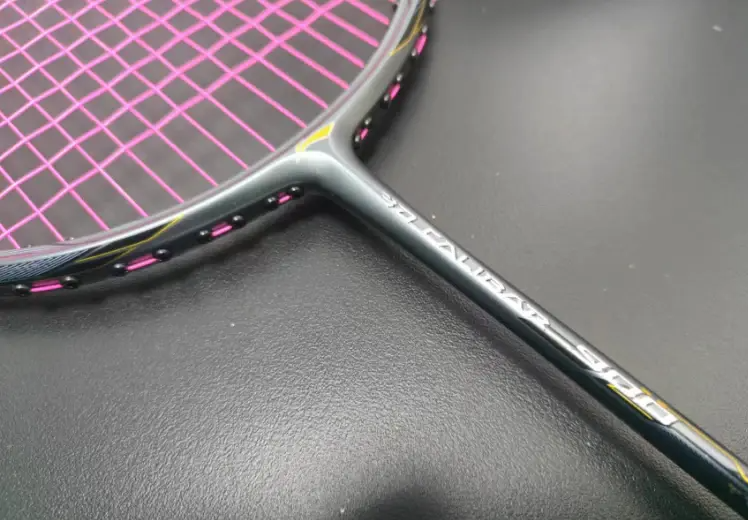
Parameters: 4UG5, de-bottomed, total weight in used condition 86.69g, overall length 675mm, balance point 317mm, center bar length 214mm, medium-high stiffness, wind-breaker frame, 76-hole thread bed, 9-3 point thread slot, 30lb warranty, threading 25-27lbs Tasseled Sable.
Whether it’s the low-end 300 or the high-end 900, its choice of color retains consistency, and when placed on a suffix-less model it’s a combination of black and gold. The metallic gold paint on over half of the racket head gradually transitions from the wings to a silver-white and then to the gray-black T-head and center bar, naturally creating a nice layered look. However, compared to many other racquets with the same color scheme, the CALIBAR 900 is quite restrained and not overly reflective. It is also less recognizable because the racquet retention is relatively a little less compared to the rest of the models.
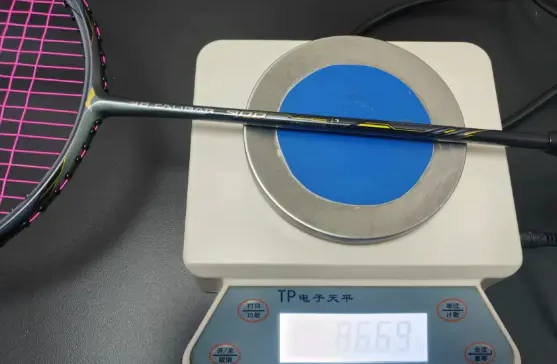
The weight of the CALIBAR 900 is quite noticeable, and as a 4U racquet, it has the word “downward pressure” written all over it, and the measured balance point really surprised me. However, to be fair, it doesn’t have the intimidating first impression of THRUSTER RYUGA, and it’s quite modest and gentle in the relatively soft lacquer impression. Of course, the swing weight in the air swing is quite a bit more than the 900B in my opinion, and has a more pronounced attacking character.
The CALIBAR frame is still one of those frames that I love to hate. The good thing is that the extremely rigid construction provides direct feedback while keeping the wind resistance low, but the bad thing is that for me, I always hit the frame when I first use it because of the mismatch between swing speed and swing weight. I’ve hit the CALIBAR with full wind break quite a few times, and at this point in time I still hit the box when I’m being pushed quickly into the backcourt or when the field is poorly lit. As a comparison, the CALIBAR 300 series with its partially boxed frame construction would make me feel a lot better.
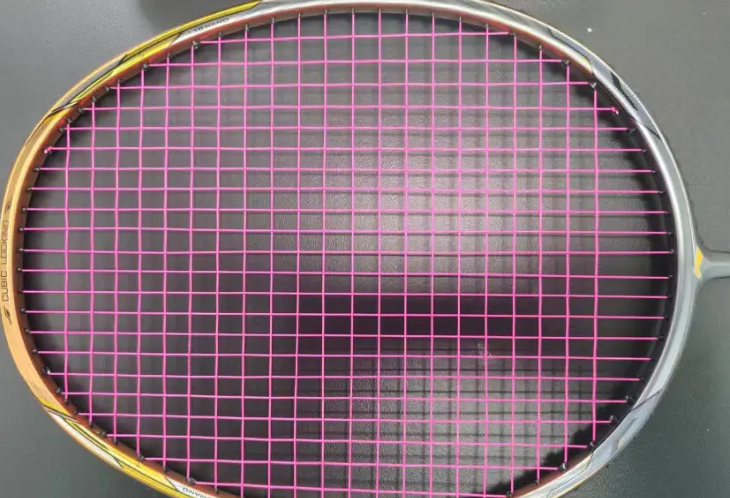
Of course, its own racket face area is huge and very forgiving, so the problem of hitting the frame overhand is really more attributable to my form. The characteristics of this racket have been described many times before, so I won’t expand on them here. Overall, it’s not too difficult to use, the swing weight is big but the power is excellent, and the power is obvious in the long distance shots, which is in line with my prediction of it, basically, I have confidence to play against it after a few rounds of pulling the ball high and long.
The wire groove’s increase in swing speed was a drop in the bucket with such a large swing weight, so I would stand a step to half a step further back than usual on doubles draws, otherwise there was really no way to ensure that I could hit the ball in front of my body at a faster pace. In the backhand area of the passive ball handling 900 is also really worse than 900B a big step, the power is much more difficult to send a lot of users put forward a higher demand. On the other hand, the stability of the racket surface is very stable, and the feeling of its power popping up is also obvious, and I can hit the backcourt in the face of the opponent’s continuous downward pressure to make me satisfied with the backcourt escape.
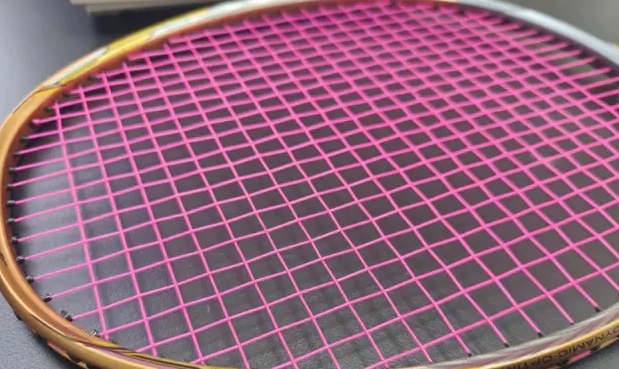
But the consistency of the 900’s shots is good, or it wouldn’t be the choice of a host of good singles players. Whether it’s a long, drawn-out wide-open backcourt movement or a gamey, doggedly cautious net control and net grabbing, CALIBAR 900 with its solid feel is able to play quite consistently and qualitatively over a long period of time against the net. Latitude let me not quite adapt to is in the backcourt of a shot hanging or slice situation, the error rate is quite high, may still be slow pace of the feet can not get the high point of the reason.
The CALIBAR 900, with its stronger downward pressure, is capable of hitting the ball with a power that matches its size in situations that require a violent offense. Because of the strong downward pressure, you don’t have to worry about not being able to get the ball out of the backcourt, and with the jumping and heavy killing, the route of the ball is low enough to reach out. At the same time, the power feedback is quite direct, and the ball is fast and heavy enough to play offense with confidence when the power window is full. The racquet’s metaphysics are also in place, and with the thin strings you will get a good bludgeoning sound, and the shock effect continues to be attached. Consistent performance wasn’t overly impressive, but it didn’t drag too much either, and didn’t feel like it was missing the point.
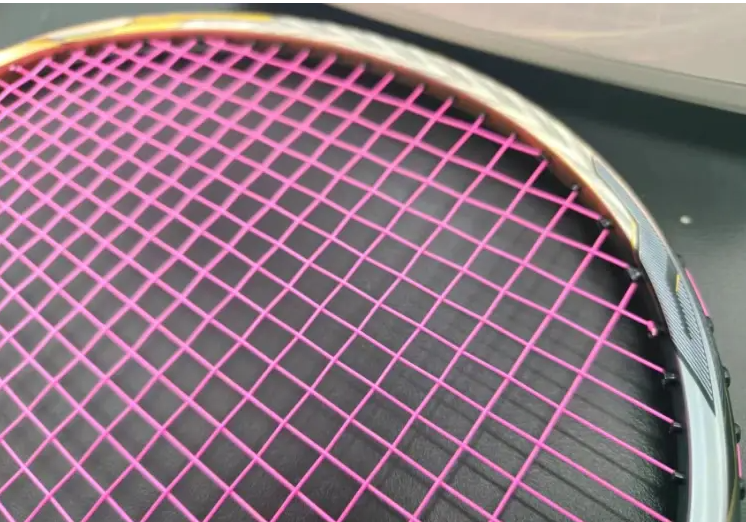
I didn’t realize that it has also been out for 6 years and the CALIBAR 900, a flagship product that challenged the user, has become an old buddy. The CALIBAR frame still provides good combat power, but the open edges are really sharp, and the resulting paint is not going to be dealt with anytime soon.
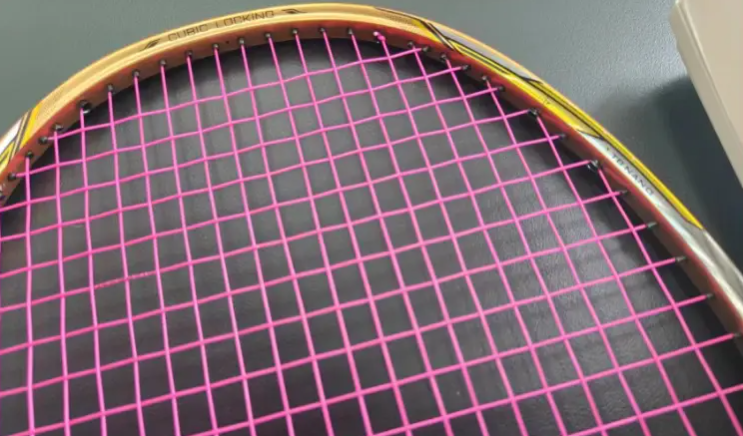

Leave a Reply